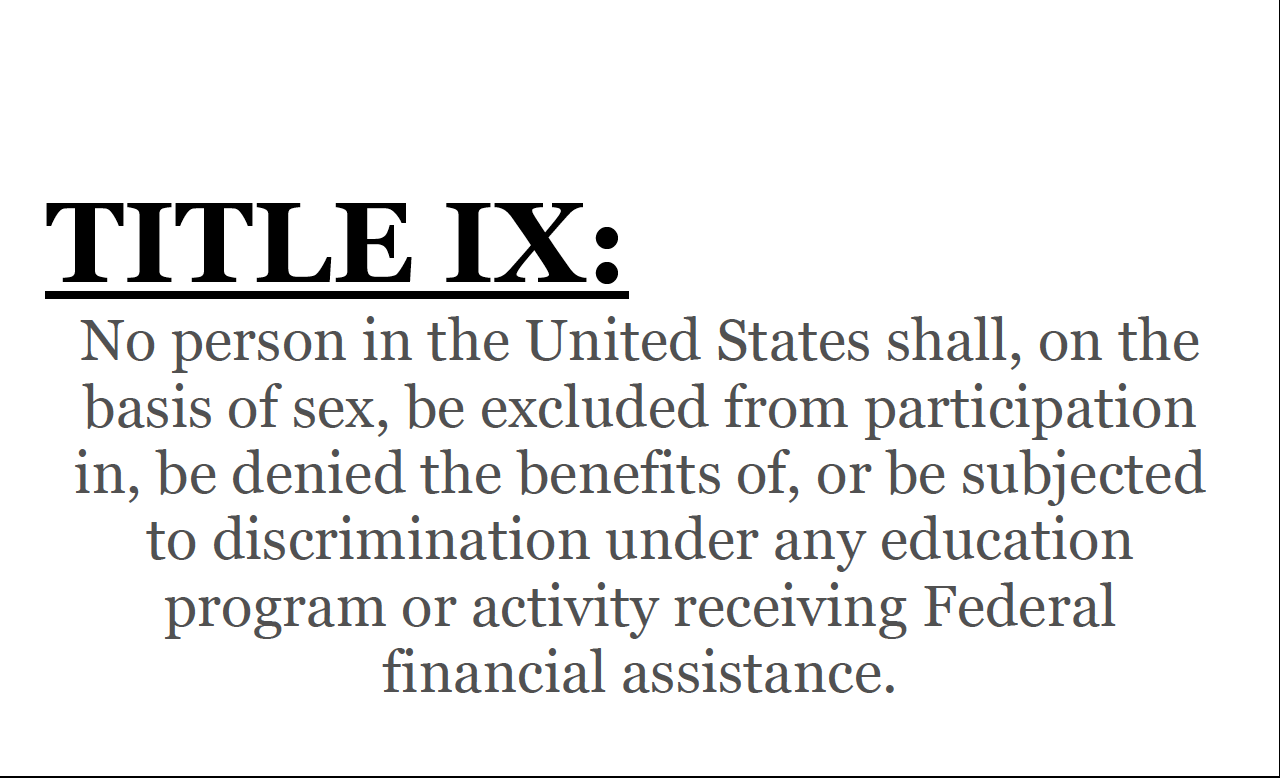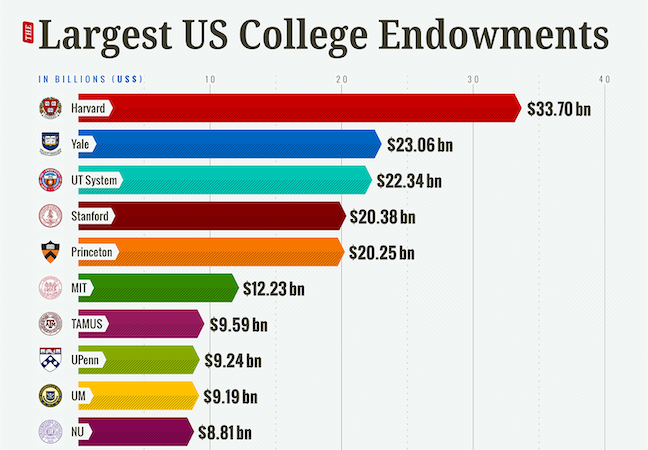Title IX is the single biggest thing ever to have happened to American sports. Since Title IX was passed in 1972, women's participation in high school athletics has rocketed up over 990 percent; it has similarly gone up more than 545 percent in college sports. Prior to Title XI, fewer than one out of 27 girls played any form of sport, today that number is two of five. Today there aren’t just more American women playing sports than before- they are better at it as well. In the 2016 Rio Olympics, the world watched as American women shattered record after record and collected medal upon medal for a total of 61; by comparison, Chinese male and female athletes, coming in second place in the overall medal count, earned a total of seventy medals.

Girl’s soccer in America benefited hugely from Title XI. Youth soccer was experiencing a boom in popularity throughout the country as Title XI was passed. Title IX supercharged this growth. In 1980 there were roughly 900,000 kids playing soccer; by 2000, that number had more than tripled to over 3 million. The proportion of girls playing youth recreational soccer nationwide grew at an even faster rate, from less than five percent in 1980 to over fifty percent in 2000, a truly unprecedented occurrence.
At the high school level, the growth of female soccer players was also dramatic. In 1976 only ten percent of players were female; that’s less than 10,000 people at the time. That number had quadrupled to 41,000 in 1980. By 1990, still more high school girls took up the cleats and shin guards, and 35 percent of all high soccer players were female, for a total of over 120,000 girls. By 2000, nearly 270,000 girls played high school soccer, representing 42 percent of high school soccer players. Today, in 2020, that number is 394,000, which is almost half of all the high school soccer players in America.
Staying in line with the trend, women's collegiate level soccer benefited tremendously from Title XI, maybe even more so than lower school. Although participation numbers are not readily available, a good estimate can be gleaned from the number of NCAA institutions sponsoring soccer. In 1981, men’s soccer was fairly well established, with 521 varsity teams, substantially more than the women's measly 77 sponsoring schools. By 1985, women were up to 201 teams, and by 1990, that number grew to 318. By then, nearly 40 percent of NCAA (National College Athletic Association) colleges sponsored women soccer teams, up from just 10 percent just a decade prior. The men’s program had only grown from 521 to 569, and remained stagnant at 70 percent of colleges. Meanwhile, the growth for women not only continued, but actually accelerated during the late 1990’s, overtaking the men in 1997. By 1999, there were many more women’s varsity programs in the NCAA than men’s, 790 to 719. Women, who could only count on 11% of the NCAA institutions to provide them a soccer opportunity before Title XI now had a choice from 77% of the institutions, while men remained steady at 70%.
As womens soccer increased in popularity and more and more schools jumped on the bandwagon, tournaments were formed. By the early 1980s, the NJCAA and NAIA launched their first women’s championships, and the NCAA added champions in Divisions II and III in 1986 and 1988 respectively. These tournaments grew in size throughout the 1990’s, which culminated the 2001 expansion of the Division I tournament to 64 teams, twice as large as the men’s 32. It was in the late 1900’s and early 2000’s that big name schools like Central Florida, George Mason, Connecticut, Santa Clara, Notre Dame, UCLA and Penn State became regular contenders for the national title, though, they were usually all beaten by North Carolina Chapel Hill’s Tar Heels in the end, a recurring theme to this day. These top teams groomed the best players for a career on the National Team, which would grow to become the most successful National women's soccer team yet formed, all thanks to title XI.
No. | School | College Cup Years | NCAA Appearances | Championships |
29 | North Carolina | 1982, 1983, 1984, 1985, 1986, 1987, 1988, 1989, 1990, 1991, 1992, 1993, 1994, 1995, 1996, 1997, 1998, 1999, 2000, 2001, 2002, 2003, 2006, 2008, 2009, 2012, 2016, 2018, 2019 | 33 | 21 |
12 | Notre Dame | 1994, 1995, 1996, 1997, 1999, 2000, 2004, 2006, 2007, 2008, 2009, 2010 | 20 | 3 |
11 | UCLA | 2000, 2003, 2004, 2005, 2006, 2007, 2008, 2009, 2013, 2017, 2019 | 17 | 1 |
10 | Stanford | 1993, 2008, 2009, 2010, 2011, 2012, 2014, 2017, 2018, 2019 | 25 | 3 |
10 | Florida State | 2003, 2005, 2006, 2007, 2011, 2012, 2013, 2014, 2015, 2018 | 17 | 2 |
10 | Santa Clara | 1989, 1990, 1992, 1996, 1997, 1998, 1999, 2001, 2002, 2004 | 22 | 1 |
8 | Portland | 1994, 1995, 1996, 1998, 2000, 2001, 2002, 2005 | 19 | 2 |
7 | UConn | 1982, 1983, 1984, 1990, 1994, 1997, 2003 | 29 | 0 |
6 | Massachusetts | 1983, 1984, 1985, 1986, 1987, 1993 | 15 | 0 |
5 | Penn State | 1999, 2002, 2005, 2012, 2015 | 25 | 1 |
5 | Colorado College | 1985, 1986, 1989, 1990, 1991 | 9 | 0 |
4 | Duke | 1992, 2011, 2015, 2017 | 18 | 0 |
4 | George Mason | 1983, 1985, 1986, 1993 | 11 | 1 |
3 | Virginia | 1991, 2013, 2014 | 25 | 0 |
3 | California | 1984, 1987, 1988 | 20 | 0 |
2 | Georgetown | 2016, 2018 | 7 | 0 |
2 | USC | 2007, 2016 | 14 | 2 |
2 | Florida | 1998, 2001 | 16 | 1 |
2 | Wisconsin | 1988, 1991 | 17 | 0 |
2 | NC State | 1988, 1989 | 11 | 0 |
2 | UCF | 1982, 1987 | 17 | 0 |
1 | Washington State | 2019 | 13 | 0 |
1 | South Carolina | 2017 | 11 | 0 |
1 | West Virginia | 2016 | 17 | 0 |
1 | Rutgers | 2015 | 10 | 0 |
1 | Texas A&M | 2014 | 20 | 0 |
1 | Virginia Tech | 2013 | 8 | 0 |
1 | Wake Forest | 2011 | 16 | 0 |
1 | Boston College | 2010 | 15 | 0 |
1 | Ohio State | 2010 | 7 | 0 |
1 | Princeton | 2004 | 9 | 0 |
Women’s college soccer was able to shoot up like it did for a number of reasons. First, the number of NCAA colleges had increased by roughly a quarter since 1980, adding over 350 schools to it’s bank. Second, there was the direct impact of Title IX, which required equal expenditures between men’s and women’s sports, and equal participation. And third, it provided a body of well trained women athletes rising up through the youth soccer system.
Title XI is sometimes blamed for the disbandment or underfunding of some men's college programs. This blame is understandable, but misguided. It is unfortunate that some sports do not get the founding that they deserve, but it is not the use of college funds in the support of women's equality that is to blame for their decline. Much to the disappointment of most men’s varsity programs, football eats up so much school funding and requires such a large roster that other men’s sports suffer the cost. Luckily, men’s varsity soccer was not terribly hurt like was the case for sports such as lacrosse, gymnastics, swimming and wrestling, which were really fighting to stay alive by the end of the century. The other point to be made in defense of Title IX is that schools could choose to fund their men’s programs more, so long as they also increase the funding of their women's sports. Colleges and universities are rich. Harvard for example is sitting on an endowment of $33.7 billion. Schools make financial decisions, as seen in the loss and decline of some sports programs.

Recommended Readings for this Post
This article was the main source for this post. This reading is a little dense for a sports history piece, but it is full of some really great stuff pertaining to this week's post and beyond. I will use this article again in the future.
This is a fairly brief, feel good piece, by the NCAA, but it does dive into the specifics of one person's experience with women's college soccer in its earlier days, which is really cool.
If you are looking to buy a book about Title XI, this is one that I would fully endorse. It isn't strictly a soccer book but everything is fairly applicable to my focus area. This book is well written and although not a simple read, it shouldn't be a pain to get through. Plus a lot of it is free online!e










